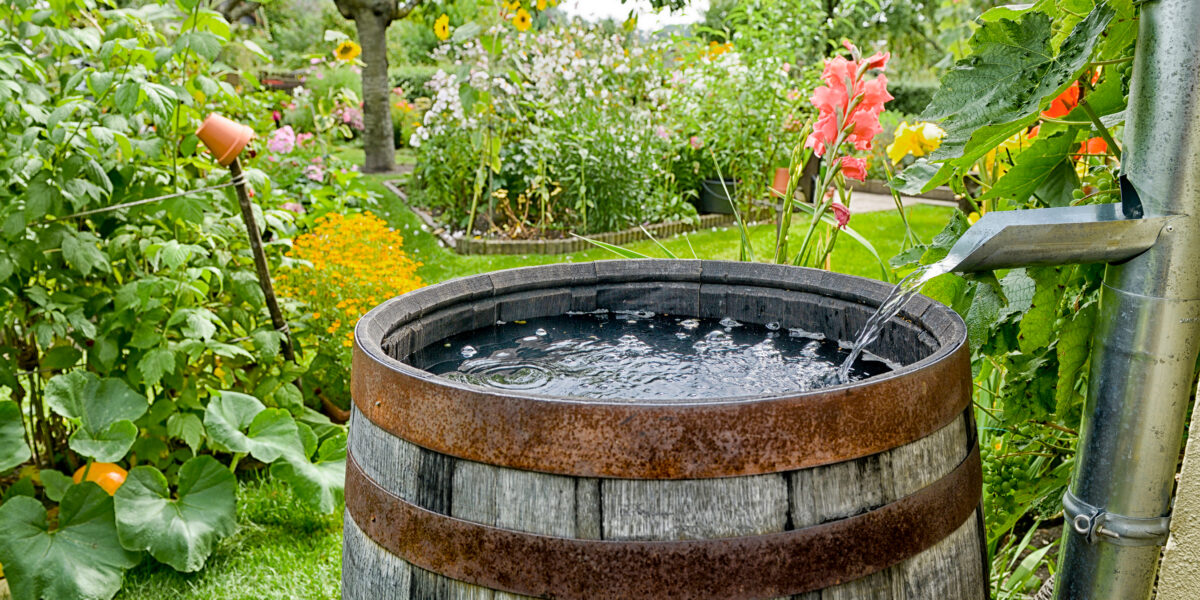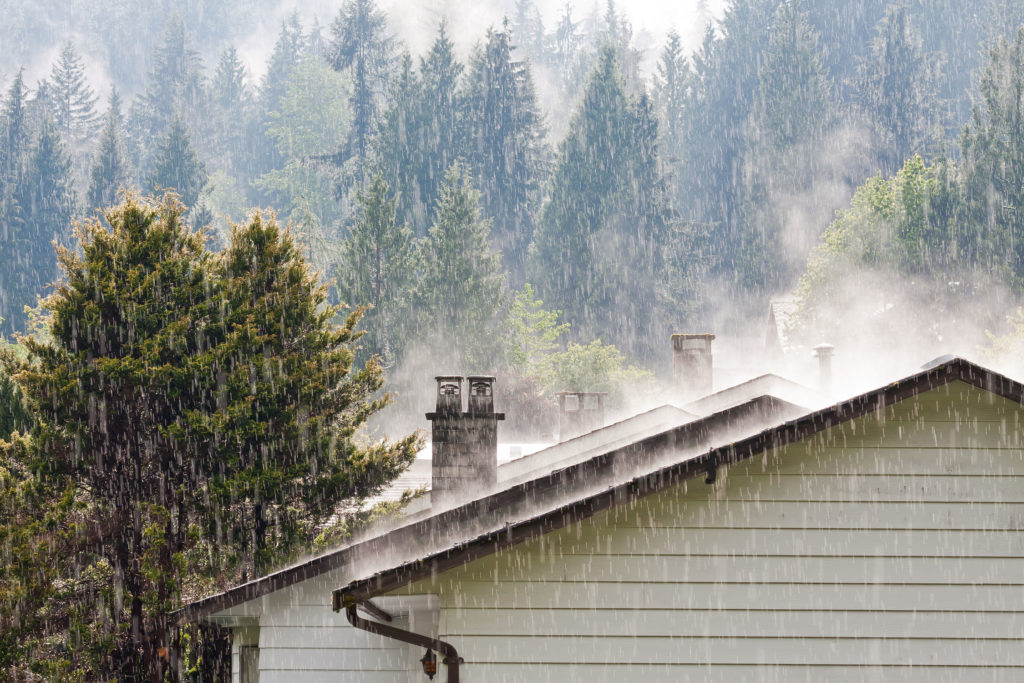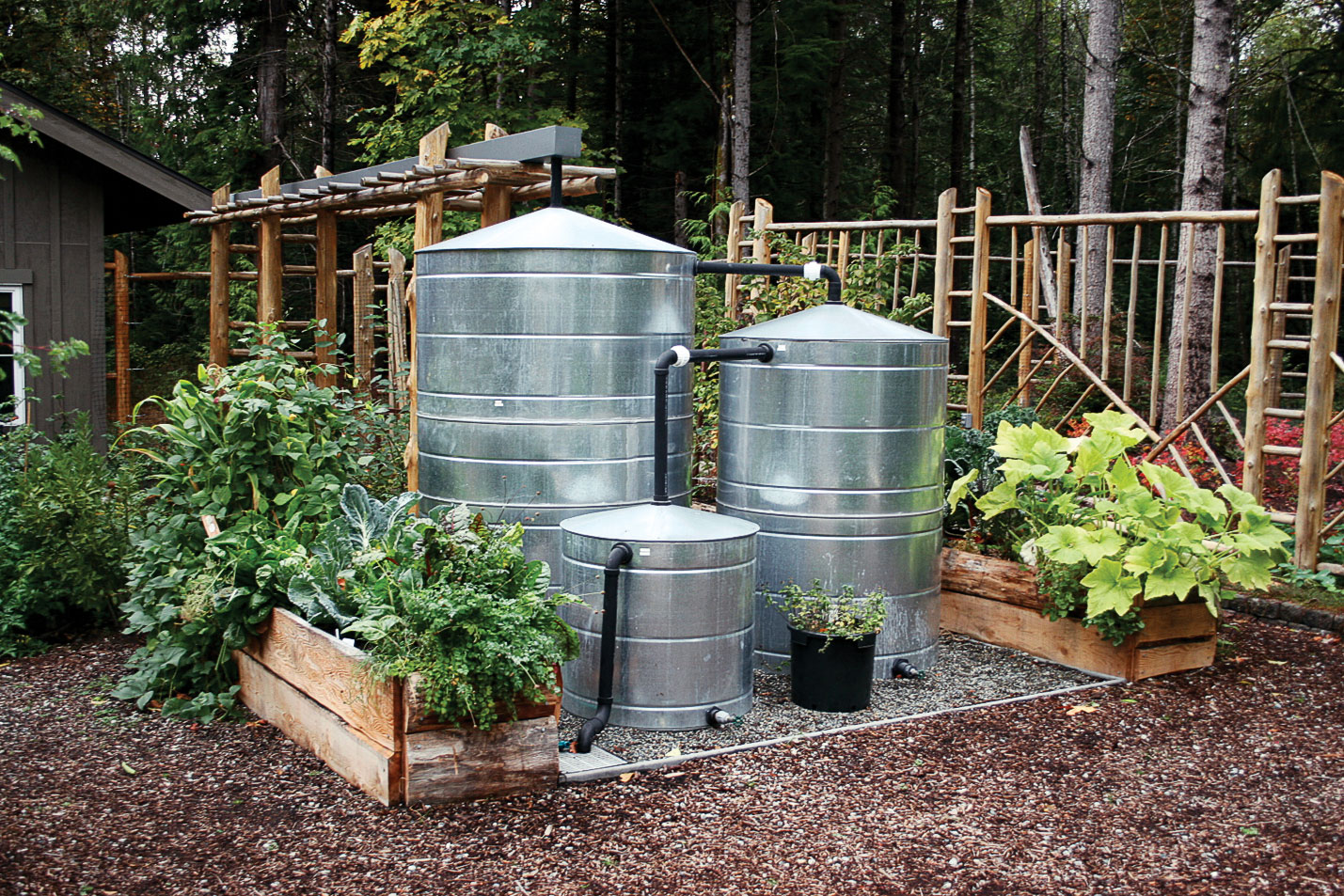
Here’s Everything You’ve Ever Wanted to Know About Saving Rainwater
Downpours aren’t just good for drought; you can save rainwater and use it in your garden later.

This article is part of our new 8-week, limited-edition newsletter series, The Low-Water Gardening Guide, where we’ll walk you through what it takes to create a sustainable garden, from swapping in the appropriate plants to new irrigation methods to the tools you’ll need and more. Sign up here to get each installment straight to your inbox.
Trying to save water—whether via a rain barrel, large-capacity tank, or greywater system—has a barrier to entry. The methods can be intimidating to some, and why one should choose one system over another can be difficult to understand.
But saving rainwater is becoming increasingly important in the West. With all the recent rains, the drought may have ended for some areas, but surely we’re kidding ourselves if we think it won’t return. Plus, when you think about the fact that rainwater harvesting dates back to the Old Testament—and that some Middle East harvesting systems are 5,000 years old—you can’t help but feel like we’re late to the party.
To remedy the situation, here’s everything you need to know about rain barrels, tanks, underground cisterns, and greywater systems. Let the party begin.
Rain Barrels
Rain barrels, when you think about it, are the gateway into water conservation because they’re quick and easy to use.
According to Kevin Lenhart, Yardzen’s Design Director, rain barrel water should be used to irrigate decorative planting like garden beds and container plants. However, he notes one should never irrigate herb or vegetable gardens with rain barrel water, or use it for cooking or as drinking water for pets. “Rooftops can leach a host of toxic substances into runoff water, so you should take care to avoid applying that water to any edible planting,” he says.
By diverting runoff, rain barrels can prevent erosion and water pollution. To buy one check your local Home Depot or Lowe’s. They’re easy to use thanks to a spigot where you can place a watering can or attach a hose. Importantly, some rain barrels have an overflow mechanism to stop water from flooding near your home once the barrel is full. (Overflowing barrels can become a breeding ground for mosquitoes, who love standing water.)

eduardo_almeida/Getty Images
In terms of placement, a rain barrel should be connected to your home’s downspout. (Hopefully in an area that gets significant rain runoff.) Also, be aware that you don’t want to place it too out of the way—then it’s a chore to get the water they contain.
Building a level platform for your rain barrel is a good idea. (A platform can be made of wood, bricks, or concrete.) The resulting water pressure will then power your hose, although some decide to invest in a pump system when needed.
“As drought persists across the country, we’re seeing growing interest in water-smart designs as a whole,” Lenhart says. “Among clients with a green thumb or a handy streak, rain barrels are gaining steam. They just require a bit of willingness to get out there and manage the water yourself.”
If you’re intimidated by rain barrels, he adds, adding more trees and permeable surfaces like planting beds and rock gardens to your garden can really help your attempts to increase your onsite water capture.
In terms of maintenance, he recommends inspecting, draining, and cleaning your barrel regularly. This way, you can make sure you aren’t collecting sediment, leaf litter, insects, or algae.
One caveat: Lenhart says contractors often say that if you’re going to make the effort to install rain barrels, you may as well go big, by using large, flat barrels that can be hidden beneath decks, which can store enough water for a powerful irrigation system with a pump. Meanwhile, keep in mind that a full 50-gallon rain barrel will only give you approximately 7 to 8 minutes of watering time.

P A Thompson/Getty Images
More Rainwater Storage Ideas
When you want to get serious about storing rainwater, Josep Ferrer, the communications manager at Greywater Corps in Los Angeles, says you should start with a 530-gallon tank and add more as needed. “It doesn’t rain often here, but when it does you can get a lot of water,” Ferrer says. “A small roof surface of 1,000 square feet will generate 600 gallons with one inch of rain—and LA gets around 15 inches of rain a year.”
The challenge, of course, is that you need a place to store it. This is why Greywater Corps recommends a Slimline tank, which can nestle tightly against the house. Round barrels can be more cost-effective, he says, but they have a larger footprint.
Like rain barrels, these rainwater harvesting systems capture water from roofs and other impermeable surfaces so you can use them later. “To install a Slimline tank, you have to set it up along with pipes to convey the water to the tank,” Ferrer says. “You also need a method to distribute the water to the landscape. This can be achieved via gravity to a hose bib or via a pump.” (A pump with a filtration system can also be connected to automatic irrigation systems such as drip lines.)

Rob D. Brodman
As for cisterns, they can hold 10,000 gallons of water and up. These large tanks can be above or below ground, and require maintenance. “Gutters, screens, and filters (if used) need to be maintained in order to function properly,” he says. Expensive projects like these, which run around $100,000 or more, are best for large properties with extensive landscaping needs. Meanwhile, although prices go up and down these days, a standard Slimline tank system can cost anywhere from $5,000 to $20,000.
What About Greywater?
Greywater is collected from showers, tubs, bathroom sinks, and washing machines. They work by redirecting your gently used water to your landscape via gravity or using a pump. “There are also systems that take water directly from a washing machine (laundry-to-landscape) and do not require modifications to the plumbing of the house,” says Ferrer. For greywater, he recommends hiring a professional since it involves modifying waste plumbing to direct only greywater out to the landscape and then building an irrigation system to distribute it.
Greywater accounts for 50 to 80 percent of the average home’s indoor water use. (The rest is blackwater from toilets and dishwashers.) How much you can save depends on how much greywater you generate, of course, but Ferrer’s clients report that they have seen up to a 60 percent reduction in their water use. As an example, Ferrer says a 10-minute shower with a low-flow 1.5 gallon per minute shower head will yield 15 gallons of greywater, while a washing machine rated for 15 gallons per load will yield about that amount of greywater as well.
If you want to store and use your greywater, you’ll have to be mindful of what household products you use. In terms of hair and soap products, the best ones to use are labeled “biodegradable” or, even better, “biocompatible.” This means they are free of dyes, scents, or bleach. Greywater Corps has a detailed product guide. Greywater is best used on trees, shrubs, and large ornamentals. It can’t be used for grass because it can’t be sprayed, nor can it be used for vegetable beds. To install a greywater system, the cost can go anywhere from $5,000 to $20,000.
Read the Current Issue Here!
Get one year of Sunset—and all kinds of bonuses—for just $24.95. Subscribe now!
